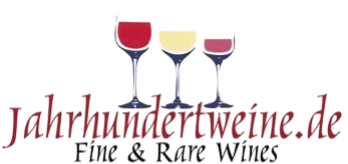Paul Jaboulet Aîné - Châteauneuf-du-Pape 1938 Single OWC
€595.00*
1 Available immediately
Fill level 2cm, label and capsule good.
Product information
The 1938 vintage in the Rhôneis a fascinating but contradictory chapter in the history of winegrowing - characterised by extreme weather events and the shadow of the impending Second World War. Here are the key facts:
Climate & weather conditions
Devastating autumn flood: In October 1938, a flood of the centurydevastated the Rhône valleys. Rivers burst their banks, destroying paths, bridges and flooding vineyards (especially in the north: Côte-Rôtie, Hermitage).
Wet summer: High rainfall favoured fungal diseases (mildew, rot), especially in the south (Châteauneuf-du-Pape, Gigondas).
Late harvest: The grape harvest took place under difficult conditions, with many grapes thinned or damaged by moisture.
Quality & style of the wines
Divided judgement:
Northern Rhône (Syrah): Difficult vintage. The flood destroyed parts of the harvest, remaining wines were often light, susceptible to oxygen with low concentration.
Southern Rhône (Grenache-dominated cuvées): Slightly better results thanks to more robust grape varieties. Some wines achieved acceptable fruitiness, but remained simply structured and not very storable.
Guigal's exception: The legendary winemaker Étienne Guigal described his father's 1938 Côte-Rôtie as"surprisingly elegant" - a rare positive testimonial that emphasises the importance of terroir- and producer-specific differences.
Historical context
Pre-war tensions:The harvest took place in a politically unstable period (Munich Agreement Sept. 1938, annexation of Austria). Labour and material shortages affected winemaking.
Subsequent vintages: 1939 was a strong year, 1940 was again characterised by war.
Rarity: Almost no intact bottles have survived. If they do, they are pure rarities for collectors or museums (e.g. Musée du Vin in Tournon-sur-Rhône).
Assessment today
"Mixed crisis vintage":
North: Weak (flood damage, thin wines).
South: Average (some drinkable, simple wines).
Tasting note: If any bottles still exist today, they would be long overripe - at best of interest as historical documents.
Quote: Wine critic John Livingstone-Learmonth ("The Wines of the Rhône") summarises:
"1938 was a year of catastrophe and courage. The wines that survived the flood were simple, fleeting - testaments to resilience, not greatness."
Conclusion
The 1938 vintage symbolises the Rhône winegrowers' fight for survival against the forces of nature and political upheaval. Whilst it left no trace on the palate, it is historically significant as the last "peaceful" vintage before the war. For the wine world, it remains a curious piece of the mosaic - interesting for historians, but without any practical enjoyment value.
Sources:
"The Wines of the Rhône" (John Livingstone-Learmonth, 6th ed.)
"A Wine Atlas of the Languegdoc" (Paul Strang, 2002)
Archive notes from the Musée du Vin (Tournon-sur-Rhône)
Oral tradition of the Domaine Guigal (Ampuis)

|
Alcohol: | 14 |
|---|---|---|

|
Colour: | red |

|
Country: | France |

|
Filling quantity: | 750 ml |

|
Flavour: | dry |

|
Grape variety: | Grenache, Mourvedre |

|
Producer: | Jaboulet Aîné Paul |

|
Product type: | Wine |

|
Region: | Rhone |

|
Type of wine: | Red wine |

|
Vintage: | 1938 |
Log in
Allergens: Sulphites
Bottler: Producer












